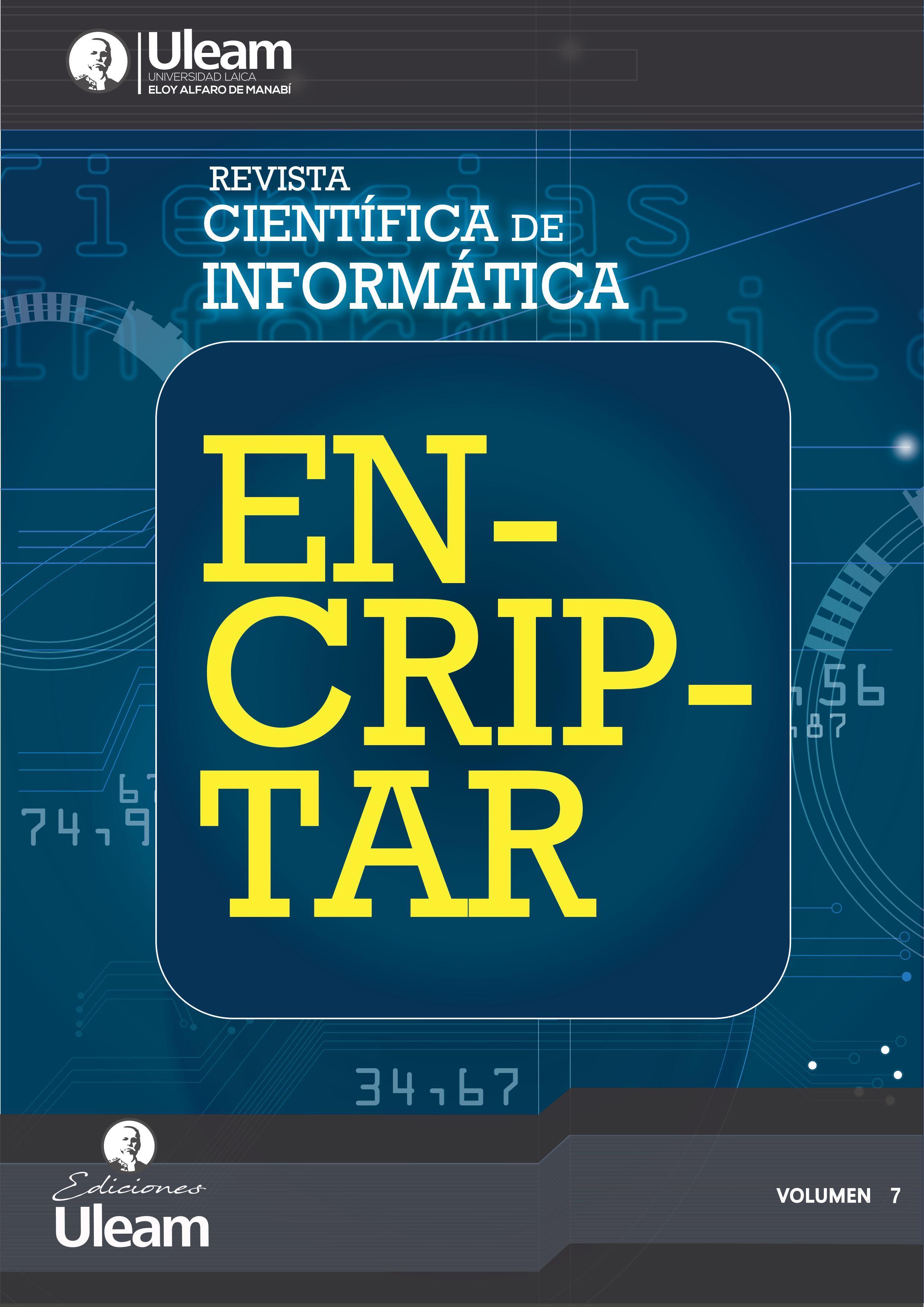Eye – Tracker Metrics used in Therapies for Individuals with Autism Spectrum Disorder: Systematic Review Literature.
DOI:
https://doi.org/10.56124/encriptar.v7i14.001Keywords:
Eye – tracker metrics, eye tracking patterns, eye – tracker algorithms, eye – tracker ASD, eye – tracker autismAbstract
Currently, multiple devices help improve their users' quality of life, even more so when they have personalized features for people with autism. Autism spectrum disorder (ASD) is a neurobiological developmental disorder that affects communication, social interaction and behavior; there are therapies for individuals with ASD that are performed using elements such as eye-tracker. The eye-tracker is a device designed to measure and record an individual's eye movements using metrics, which provide detailed information about visual behavior. For this purpose, eye-tracking patterns are analyzed, which refer to the characteristic movements that an individual's eyes follow when exploring and visually processing a stimulus or a scene. This paper compiles eye tracking patterns and metrics used by eye – trackers in therapies for individuals with autism spectrum disorder. For this, a systematic literature review (SLR) methodology has been applied, based on an exhaustive search in scientific libraries of the informatics field. The results highlight the metrics used by eye-tracker in most therapies for individuals with ASD, which are based on fixations, saccadic movements and smooth movements, as well as the artificial intelligence (AI)-based algorithms that eye-tracker software uses to analyze the data obtained from the metrics.
Downloads
References
Almourad, M. B., & Bataineh, E. (2020). Visual Attention toward Human Face Recognizing for Autism Spectrum Disorder and Normal Developing Children: An Eye Tracking Study. Proceedings of the 2020 The 6th International Conference on E-Business and Applications, 99–104. https://doi.org/10.1145/3387263.3387283
Appel, T., Santini, T., & Kasneci, E. (2016). Brightness- and motion-based blink detection for head-mounted eye trackers. Proceedings of the 2016 ACM International Joint Conference on with an emphasis on machine learning and Internet of Things technologies. Expert Systems with Applications, 166, 114037. https://doi.org/10.1016/j.eswa.2020.114037
Banire, B., Al Thani, D., Qaraqe, M., Mansoor, B., & Makki, M. (2021). Impact of mainstream classroom setting on attention of children with autism spectrum disorder: An eye-tracking study. Universal Access in the Information Society, 20(4), 785–795. https://doi.org/10.1007/s10209-020-00749-0
Banire, B., Al-Thani, D., Qaraqe, M., Khowaja, K., & Mansoor, B. (2020). The Effects of Visual Stimuli on Attention in Children With Autism Spectrum Disorder: An Eye-Tracking Study. IEEE Access, 8, 225663–225674. IEEE Access. https://doi.org/10.1109/ACCESS.2020.3045042
Birawo, B., & Kasprowski, P. (2022). Review and Evaluation of Eye Movement Event Detection Algorithms. Sensors, 22(22), Article 22. https://doi.org/10.3390/s22228810
Bochet, A., Franchini, M., Kojovic, N., Glaser, B., & Schaer, M. (2021). Emotional vs. Neutral Face Exploration and Habituation: An Eye-Tracking Study of Preschoolers With Autism Spectrum Disorders. Frontiers in Psychiatry, 11. https://doi.org/10.3389/fpsyt.2020.568997
Dalrymple, K. A., Wall, N., Spezio, M., Hazlett, H. C., Piven, J., & Elison, J. T. (2018). Rapid face orienting in infants and school-age children with and without autism: Exploring measurement invariance in eye-tracking. PLoS ONE, 13(8), e0202875. https://doi.org/10.1371/journal.pone.0202875
eXavier, J., eVignaud, V., eRuggiero, R., eBodeau, N., eCohen, D., & eChaby, L. (2015). A Multidimensional Approach to the Study of Emotion Recognition in Autism Spectrum Disorders. Frontiers in Psychology, 6. https://doi.org/10.3389/fpsyg.2015.01954
Fixation detection for head-mounted eye tracking based on visual similarity of gaze targets | Proceedings of the 2018 ACM Symposium on Eye Tracking Research & Applications. (s/f). Recuperado el 18 de agosto de 2023, de https://dl.acm.org/doi/10.1145/3204493.3204538
Fletcher-Watson, S., & Hampton, S. (2018). The potential of eye-tracking as a sensitive measure of behavioural change in response to intervention. Scientific Reports, 8(1), Article 1. https://doi.org/10.1038/s41598-018-32444-9
Frazier, T. W., Klingemier, E. W., Parikh, S., Speer, L., Strauss, M. S., Eng, C., Hardan, A. Y., & Youngstrom, E. A. (2018). Development and Validation of Objective and Quantitative Eye Tracking−Based Measures of Autism Risk and Symptom Levels. Journal of the American Academy of Child & Adolescent Psychiatry, 57(11), 858–866. https://doi.org/10.1016/j.jaac.2018.06.023
Fuhl, W., Castner, N., & Kasneci, E. (2018a). Histogram of oriented velocities for eye movement detection. Proceedings of the Workshop on Modeling Cognitive Processes from Multimodal Data, 1–6. https://doi.org/10.1145/3279810.3279843
Fuhl, W., Castner, N., & Kasneci, E. (2018b). Rule-based learning for eye movement type detection. Proceedings of the Workshop on Modeling Cognitive Processes from Multimodal Data, 1–6. https://doi.org/10.1145/3279810.3279844
Gomez, A. R., & Gellersen, H. (2018). Smooth-i: Smart re-calibration using smooth pursuit eye movements. Proceedings of the 2018 ACM Symposium on Eye Tracking Research & Applications, 1–5. https://doi.org/10.1145/3204493.3204585
Hauser, F., Mottok, J., & Gruber, H. (2018). Eye Tracking Metrics in Software Engineering. Proceedings of the 3rd European Conference of Software Engineering Education, 39–44. https://doi.org/10.1145/3209087.3209092
Hochhauser, M., Aran, A., & Grynszpan, O. (2021). Investigating attention in young adults with autism spectrum disorder (ASD) using change blindness and eye tracking. Research in Autism Spectrum Disorders, 84, 101771. https://doi.org/10.1016/j.rasd.2021.101771
Kinsman, T., Evans, K., Sweeney, G., Keane, T., & Pelz, J. (2012). Ego-motion compensation improves fixation detection in wearable eye tracking. Proceedings of the Symposium on Eye Tracking Research and Applications, 221–224. https://doi.org/10.1145/2168556.2168599
Klaib, A. F., Alsrehin, N. O., Melhem, W. Y., Bashtawi, H. O., & Magableh, A. A. (2021). Eye tracking algorithms, techniques, tools, and applications with an emphasis on machine learning and Internet of Things technologies. Expert Systems with Applications, 166, 114037. https://doi.org/10.1016/j.eswa.2020.114037
Kurzhals, K., Hlawatsch, M., Burch, M., & Weiskopf, D. (2016). Fixation-image charts. Proceedings of the Ninth Biennial ACM Symposium on Eye Tracking Research & Applications, 11–18. https://doi.org/10.1145/2857491.2857507
Lahiri, U., Bekele, E., Dohrmann, E., Warren, Z., & Sarkar, N. (2013). Design of a Virtual Reality Based Adaptive Response Technology for Children With Autism. IEEE Transactions on Neural Systems and Rehabilitation Engineering, 21(1), 55–64. https://doi.org/10.1109/TNSRE.2012.2218618
Li, B., Wang, Q., Barney, E., Hart, L., Wall, C., Chawarska, K., de Urabain, I. S., Smith, T. J., & Shic, F. (2016). Modified DBSCAN algorithm on oculomotor fixation identification. Proceedings of the Ninth Biennial ACM Symposium on Eye Tracking Research & Applications, 337–338. https://doi.org/10.1145/2857491.2888587
Martínez, L. (2021). Casos exploratorios aplicados a partir de distintos diseños metodológicos: Eye-tracking fijo y online. Comunicación & Métodos, 3(2), Article 2. https://doi.org/10.35951/v3i2.136
Morales, A., Costela, F. M., Tolosana, R., & Woods, R. L. (2018). Saccade Landing Point Prediction: A Novel Approach based on Recurrent Neural Networks. Proceedings of the 2018 International Conference on Machine Learning Technologies, 1–5. https://doi.org/10.1145/3231884.3231890
Munn, S. M., Stefano, L., & Pelz, J. B. (2008). Fixation-identification in dynamic scenes: Comparing an automated algorithm to manual coding. Proceedings of the 5th symposium on Applied perception in graphics and visualization, 33–42. https://doi.org/10.1145/1394281.1394287
Muratori, F., Billeci, L., Calderoni, S., Boncoddo, M., Lattarulo, C., Costanzo, V., Turi, M., Colombi, C., & Narzisi, A. (2019). How Attention to Faces and Objects Changes Over Time in Toddlers with Autism Spectrum Disorders: Preliminary Evidence from An Eye Tracking Study. Brain Sciences, 9(12), Article 12. https://doi.org/10.3390/brainsci9120344
Rapid alternating saccade training | Proceedings of the 2018 ACM Symposium on Eye Tracking Research & Applications. (s/f). Recuperado el 19 de agosto de 2023, de https://dl.acm.org/doi/10.1145/3204493.3204588
Robain, F., Kojovic, N., Solazzo, S., Glaser, B., Franchini, M., & Schaer, M. (2021). The impact of social complexity on the visual exploration of others’ actions in preschoolers with autism spectrum disorder. BMC Psychology, 9(1), 1–15. https://doi.org/10.1186/s40359-021-00553-2
Rosa, A. D. (2022, febrero 28). Application of Eye-tracking in research on the theory of mind in ASD. European Review. https://www.europeanreview.org/article/28129
Sanchez, M. (2022, abril 7). La tecnología como ayuda para los niños con TEA. Atlantic International Technology. https://www.atlantic.es/blog/la-tecnologia-como-ayuda-para-los-ninos-con-tea/
Sanromà-Giménez, M., Lázaro-Cantabrana, J. L., & Gisbert-Cervera, M. (2018). El papel de las tecnologías digitales en la intervención educativa de niños con trastorno del espectro autista. RiiTE Revista Interuniversitaria de Investigación en Tecnología Educativa. https://doi.org/10.6018/riite/2018/327991
Santini, T., Fuhl, W., Kübler, T., & Kasneci, E. (2016). Bayesian identification of fixations, saccades, and smooth pursuits. Proceedings of the Ninth Biennial ACM Symposium on Eye Tracking Research & Applications, 163–170. https://doi.org/10.1145/2857491.2857512
Sasson, N. J., & Elison, J. T. (2012). Eye Tracking Young Children with Autism. JoVE (Journal of Visualized Experiments), 61, e3675. https://doi.org/10.3791/3675
Schwartzman, J. S., Velloso, R. de L., D’Antino, M. E. F., & Santos, S. (2015). The eye-tracking of social stimuli in patients with Rett syndrome and autism spectrum disorders: A pilot study. Arquivos de Neuro-Psiquiatria, 73, 402–407. https://doi.org/10.1590/0004-282X20150033
SciELO - Brasil—Saccadic movements using eye-tracking technology in individuals with autism spectrum disorders: Pilot study Saccadic movements using eye-tracking technology in individuals with autism spectrum disorders: Pilot study. (s/f). Recuperado el 26 de agosto de 2023, de https://www.scielo.br/j/anp/a/Db95r6fvqWKKQmxKGZNBZ8b/?lang=en
Serrano Baraja, A. L. (2022). Revisión sociohistórica del concepto de autismo y sus implicaciones epistemológicas en los últimos cuarenta años [masterThesis, Quito, EC: Universidad Andina Simón Bolívar, Sede Ecuador]. http://repositorio.uasb.edu.ec/handle/10644/8597
Sharafi, Z., Shaffer, T., Sharif, B., & Guéhéneuc, Y.-G. (2015). Eye-Tracking Metrics in Software Engineering. 2015 Asia-Pacific Software Engineering Conference (APSEC), 96–103. https://doi.org/10.1109/APSEC.2015.53
Sharafi, Z., Soh, Z., & Guéhéneuc, Y.-G. (2015). A systematic literature review on the usage of eye- tracking in software engineering. Information and Software Technology, 67, 79–107. https://doi.org/10.1016/j.infsof.2015.06.008
Skaramagkas, V., Giannakakis, G., Ktistakis, E., Manousos, D., Karatzanis, I., Tachos, N. S., Tripoliti, E., Marias, K., Fotiadis, D. I., & Tsiknakis, M. (2023). Review of Eye Tracking Metrics Involved in Emotional and Cognitive Processes. IEEE Reviews in Biomedical Engineering, 16, 260–277. https://doi.org/10.1109/RBME.2021.3066072
Swanson, M. R., & Siller, M. (2013). Patterns of gaze behavior during an eye-tracking measure of joint attention in typically developing children and children with autism spectrum disorder. Research in Autism Spectrum Disorders, 7(9), 1087–1096. https://doi.org/10.1016/j.rasd.2013.05.007
Taha Ahmed, Z. A., & Jadhav, M. E. (2020). A Review of Early Detection of Autism Based on Eye-Tracking and Sensing Technology. 2020 International Conference on Inventive Computation Technologies (ICICT), 160–166. https://doi.org/10.1109/ICICT48043.2020.9112493
Tan, E., Wu, X., Nishida, T., Huang, D., Chen, Z., & Yi, L. (2018). Analogical Reasoning in Children With Autism Spectrum Disorder: Evidence From an Eye-Tracking Approach. Frontiers in Psychology, 9. https://doi.org/10.3389/fpsyg.2018.00847
Tauscher, J.-P., Schottky, F. W., Grogorick, S., Magnor, M., & Mustafa, M. (2018). Analysis of neural correlates of saccadic eye movements. Proceedings of the 15th ACM Symposium on Applied Perception, 1–9. https://doi.org/10.1145/3225153.3225164
The application of eye‐tracking technology in the study of autism—Boraston—2007—The Journal of Physiology—Wiley Online Library. (s/f). Recuperado el 3 de septiembre de 2023, de https://physoc.onlinelibrary.wiley.com/doi/full/10.1113/jphysiol.2007.133587
Trabulsi, J., Norouzi, K., Suurmets, S., Storm, M., & Ramsøy, T. Z. (2021). Optimizing Fixation Filters for Eye-Tracking on Small Screens. Frontiers in Neuroscience, 15. https://www.frontiersin.org/articles/10.3389/fnins.2021.578439
Vaca-Cardenas, L., Avila-Pesantez, D., Vaca-Cárdenas, M., & Meza, J. (2020). Trends and Challenges of HCI in the New Paradigm of Cognitive Cities. 2020 Seventh International Conference on eDemocracy & eGovernment (ICEDEG), 120–126. https://doi.org/10.1109/ICEDEG48599.2020.9096845
Vacas, J., Antolí, A., Sánchez-Raya, A., Pérez-Dueñas, C., & Cuadrado, F. (2021). Visual preference for social vs. Non-social images in young children with autism spectrum disorders. An eye tracking study. PLoS ONE, 16(6), e0252795. https://doi.org/10.1371/journal.pone.0252795
Vargas-Cuentas, N. I., Roman-Gonzalez, A., Gilman, R. H., Barrientos, F., Ting, J., Hidalgo, D., Jensen, K., & Zimic, M. (2017). Developing an eye-tracking algorithm as a potential tool for early diagnosis of autism spectrum disorder in children. PLOS ONE, 12(11), e0188826. https://doi.org/10.1371/journal.pone.0188826
Wang, Q., Kim, E., Chawarska, K., Scassellati, B., Zucker, S., & Shic, F. (2014). On relationships between fixation identification algorithms and fractal box counting methods. Proceedings of the Symposium on Eye Tracking Research and Applications, 67–74. https://doi.org/10.1145/2578153.2578161
Wu, J., & Trivedi, M. M. (2010). An eye localization, tracking and blink pattern recognition system: Algorithm and evaluation. ACM Transactions on Multimedia Computing, Communications, and Applications, 6(2), 8:1-8:23. https://doi.org/10.1145/1671962.1671964
Yaneva, V., Ha, L. A., Eraslan, S., Yesilada, Y., & Mitkov, R. (2018). Detecting Autism Based on Eye-Tracking Data from Web Searching Tasks. Proceedings of the 15th International Web for All Conference, 1–10. https://doi.org/10.1145/3192714.3192819
Published
How to Cite
Issue
Section
License
Copyright (c) 2024 Scientific Journal of Informatics ENCRYPT - ISSN: 2737-6389.

This work is licensed under a Creative Commons Attribution-NonCommercial-ShareAlike 4.0 International License.















